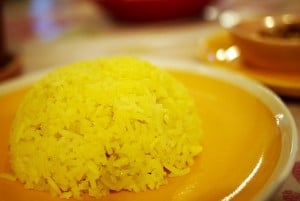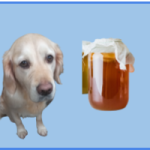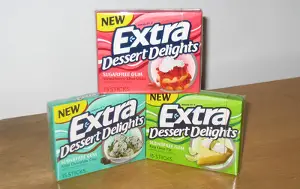If you’re one of those who enjoy a generous helping of yellow rice every now and then, and would like to know if you can share some of this delicacy with your furry friend. The simple answer to that is no, and the not-so-simple answer is maybe.
Most often than not, yellow rice will contain a number of spices which are not dog-friendly. Even if these spices are added in small quantities, some of the toxins they contain can build up in a dog’s body and will become poisonous over time.
Dogs can eat a wide variety of human foods, but not all human foods are great for foods and some can easily result in life-threatening conditions. Let’s find out more about dogs eating yellow rice!
What is yellow rice?
Yellow rice is prepared by cooking white rice with coloured spices such as saffron, turmeric or annatto to give it a brilliant yellow colour and mild or slightly tangy flavour. This is a common traditional cuisine in many countries like Spain, India, South Africa, Morocco and the West Indies.
The Indian, Indonesian, Cuban and Spanish-style yellow rice usually accompanies lots of different recipes as a side dish. Yellow rice is generally easy to prepare and a good source of many vitamins and minerals including riboflavin, calcium, thiamine, niacin, vitamin B-6, magnesium, potassium, phosphorus, sodium, iron, etc.
Is yellow rice safe for dogs to eat?
Yellow rice contains certain spices and seasoning that makes it unsafe for dogs to eat. Besides the active colouring agent, which may be turmeric or saffron, yellow rice can contain other spices like onions, garlic, ginger, cloves, shallots, scallions, etc.
Any of these spices can be toxic to dogs, especially if they are added in sufficient amounts to trigger a negative reaction in a dog’s system. Onions, garlic, scallion, shallot, leeks and chives all belong to the allium family of herbs, and they all have the potential to induce hemolytic anaemia in dogs.
Hemolytic anaemia is a serious condition where there is damage to red blood cells leading to a significant reduction in the number of these cells in the blood.
If a dog is given yellow rice containing sufficient amounts of these potentially toxic spices, it may suffer a serious episode of hemolytic anaemia, which can be fatal if not treated early enough. The best rice for dogs is plain cooked white rice mixed with commercial dog food and served with boiled egg, plain boiled boneless chicken, pork, or beef.
Can dogs eat Vigo yellow rice?
Vigo yellow rice is a completely flavoured and delicious recreation of the classic Spanish yellow rice. This product is great for a quick dinner and perfect with chicken, beef, pork or seafood. It’s certainly great for humans, both in taste and nutrition, but the same cannot be said for dogs.
Vigo yellow rice certainly has a great flavour, but it’s somewhat too salty for dogs. Dogs do need salt in their body system for electrolyte balance, but only in very small amounts. It’s not recommended that dogs eat salt or salty foods because this can lead to salt poisoning.
When dogs eat salty food or ingest large amounts of salt, this will cause hypernatremia (salt poisoning or salt toxicity), with symptoms like vomiting, weakness, nausea, diarrhea, dehydration, muscle tremors, seizures, etc. While Vigo yellow rice is a great dinner option for you, keep it away from your dog because it’s too salty for them.
What nutrition is in rice?
There are different types of rice, but they are mostly classified as either white or brown rice. White rice is generally white, but brown rice can come in varying shades of brown, red, purple or black.
The major nutrient in rice is carbohydrate (about 80% of its dry weight) and some amount of protein, however, the precise amount of nutrient will vary depending on the type of rice and the level of processing it has undergone.
Both brown and white rice have slightly similar amounts of carbohydrates, proteins, fibre, calories and fat. Rice also contains some vitamins and minerals including folate, thiamine, niacin, iron, phosphorus, magnesium, manganese, zinc, selenium, copper, etc. Brown rice contains more fibre, vitamins, minerals and antioxidants, it generally has more nutrients than white rice.
White rice is actually refined and processed to appear white and during this process some of the nutrients are lost, but it’s also fortified with vitamins and minerals to make up for the loss. And on the other hand, brown rice is referred to as whole grain because it has all parts of the grain intact, and therefore it’s more nutritious than white rice.
How can rice help dogs with diarrhea?
Vets mostly recommend plain boiled white rice as a bland diet for dogs with diarrhea caused by dietary indiscretion because rice is easily digestible and will not further irritate the dog’s GI tract. White rice is also a good source of soluble fibre which can absorb some of the water in the bowel and decrease the PH level in the intestines.
It also slows down the movement of food through the intestines, enabling the large intestines to absorb some more water. By doing this, it promotes the formation of firm and normal stool. Another excellent source of fibre is pumpkin, and it’s also part of the bland diet recommended for dogs with diarrhea.
Can dogs eat Spanish yellow rice?
As facultative carnivores, dogs are able to eat a wide variety of foods including meat, vegetables, grains, etc. Dogs can certainly eat rice, but the best rice for dogs is plain cooked white rice. The digestive system of these canines is certainly different from ours, and they don’t need as many spices as we do.
Not only do dogs not need spices, but some of the spices we add to our dishes can be toxic and pose serious health risk for our canines. For instance, Spanish yellow rice can contain either turmeric, saffron or annatto as the major colouring agent. When it’s turmeric or a small amount of saffron, it can be safe for your dog.
But annatto has been found to cause hypoglycemia in dogs, which is a significant and abnormal decrease in the blood sugar level. This condition will result in extreme weakness, muscle twitching, gum and skin discolouration, seizures, loss of appetite, and it can be fatal if not urgently treated.
Besides this, Spanish rice also contains other spices like garlic, onions, shallots which are not dog-friendly. Garlic or onion toxicity in dogs can cause hemolytic anaemia which is severe damage to the red blood cells.
How is Spanish yellow rice different to yellow rice?
Yellow rice is basically white rice that has been coloured yellow with spices such as turmeric, saffron or annatto, and Spanish yellow rice isn’t very different from other forms of yellow rice.
Yellow rice is a local cuisine for many countries including Morocco, Peru, Afghanistan, India, Portugal, Philippines, South Africa, Sri Lanka, Indonesia, etc.
In addition to the basic colouring spice, the recipe usually includes other local spices which may slightly differ depending on the country. However, South African yellow rice is significantly different from all other forms of yellow rice because in addition to turmeric and saffron, it’s also made with sugar, raisins and cinnamon, making it a very sweet dish.
Should dogs eat Spanish rice with saffron?
As a spice, saffron is commonly used in sauce, stew and rice recipes. It’s a powerful antioxidant and has many health benefits for humans, but what about our furry friends? How do dogs react to saffron?
Dogs have been known to eat dishes containing small quantities of saffron with no negative results. Some cookies, treats and dishes contain saffron as a colouring agent and are okay for dogs. However, when dogs consumed pure saffron or dishes containing large amounts of the spice, it led to severe gastrointestinal upset with vomiting and diarrhea. This tells us that saffron isn’t entirely safe for dogs and should be completely avoided when possible.
A very small amount of saffron in a dish is relatively safe for dogs, but very high doses or pure saffron can pose a serious health risk to your canine friend, and an extremely high dose of saffron can be fatal for dogs. Therefore, if your Spanish rice contains saffron it may be best to keep it away from your dog. And if you must give your dog a dish with saffron as an ingredient, make sure it contains only a very small amount of the spice.
Wrapping Up
When it comes to our health and that of our pets, it’s better safe than sorry. Your dog may enjoy a small helping of yellow rice today without any negative effects, but what happens when he frequently eats it, say every week for 2, 3 or 4 months?
The spices in yellow rice, saffron, turmeric, annatto, onions, garlic, scallions, etc., can be generally safe in small quantities, but they are also potentially poisonous to dogs.
Even store-bought yellow is not recommended for dogs because they can contain high quantities of salt. The best type of rice for dogs is plain-boiled white rice with no seasoning or spices at all, stick to this and worry less about potential onion or garlic toxicity, salt poisoning or saffron toxicity.






